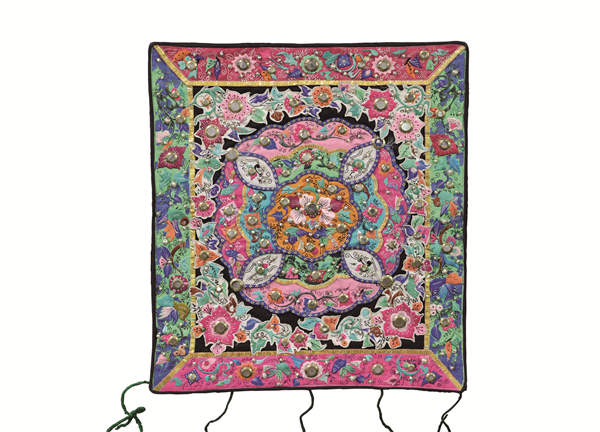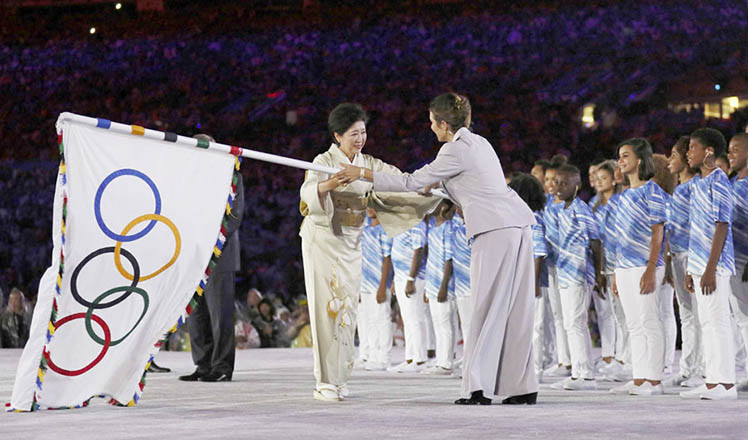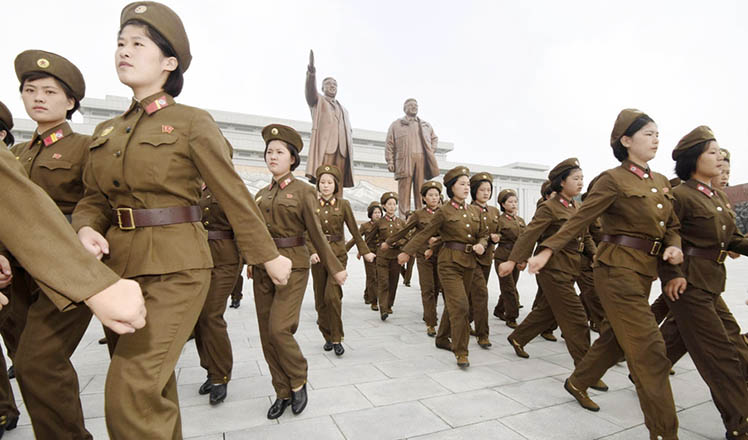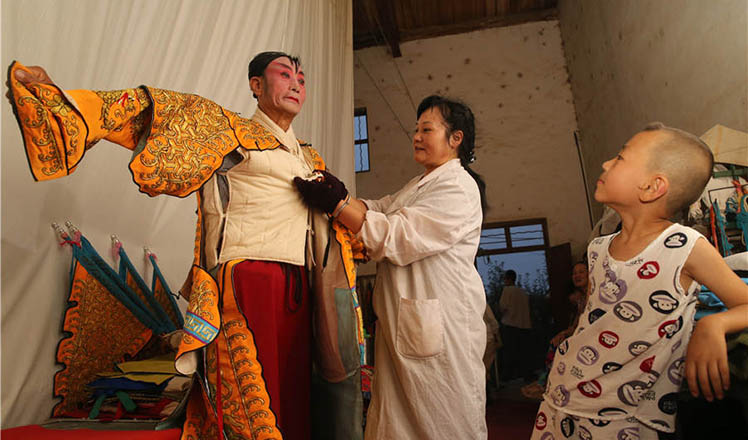Rich symbols of ethnic culture
Updated: 2016-08-23 07:44
By Lin Qi(China Daily)
|
||||||||
 |
|
The ongoing exhibition Attachment to the Hometown presents around 150 baby carriers of different ethnic groups. [Photo provided to China Daily] |
A handicraft show at the National Art Museum of China is displaying pieces of fabric lovingly embroidered by women from the country's south. Lin Qi reports.
Between the soaring, lush mountains in Southwest China are the villages of ethnic groups where women pass down exquisite embroidery traditions through generations. Among the many items they produce is the bei shan or baby carrier.
Women use colored threads to create a variety of patterns on a piece of indigo-dyed fabric to make it.
They use the carrier, which has two straps, to swaddle their babies and carry them on their backs when farming, doing housework or going to the fairs and socializing.
The carrier, which protects the new lives, has significant meaning for those living a difficult life in the remote mountainous areas where they face natural disasters, threats from wild animals and diseases. Also, it showcases different ethnic cultures through the stitching techniques that girls from the different communities learn.
The creativity of these women is being celebrated at a handicraft exhibition called Attachment to the Hometown at Beijing's National Art Museum of China.
The exhibition has around 150 baby carriers from eight ethnic groups, including the Miao, Dong, Shui and Yi, from Guizhou, Hunan and Yunnan provinces as well as the Guangxi Zhuang autonomous region.
The earliest carriers on show were made in the late Qing Dynasty (1644-1911) while the latest are from the 1980s.

 Goodbye, Rio; hello, Tokyo
Goodbye, Rio; hello, Tokyo
 The world in photos: Aug 15- Aug 21
The world in photos: Aug 15- Aug 21
 Kickboxing and throwing punches: Welcome to flight security training
Kickboxing and throwing punches: Welcome to flight security training
 Qinqiang Opera actors brave heat to bring smile to faces
Qinqiang Opera actors brave heat to bring smile to faces
 Top 10 cities with highest GDP in H1
Top 10 cities with highest GDP in H1
 Chinese teenagers take gold, silver on 10m platform
Chinese teenagers take gold, silver on 10m platform
 US granted re-run to send China out of relay race
US granted re-run to send China out of relay race
 China inches toward gold after beating Netherlands
China inches toward gold after beating Netherlands
Most Viewed
Editor's Picks

|

|

|

|

|

|
Today's Top News
Trump outlines anti-terror plan, proposing extreme vetting for immigrants
Phelps puts spotlight on cupping
US launches airstrikes against IS targets in Libya's Sirte
Ministry slams US-Korean THAAD deployment
Two police officers shot at protest in Dallas
Abe's blame game reveals his policies failing to get results
Ending wildlife trafficking must be policy priority in Asia
Effects of supply-side reform take time to be seen
US Weekly

|

|







